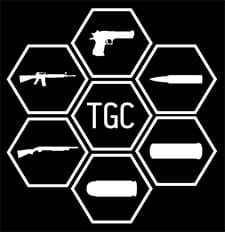Editors Note: this episode was film prior to the 2017 NRA Annual Meeting.

USA – -(Ammoland.com)- Welcome back to The Legal Brief, the show where we CRUSH the various legal myths and misinformation surrounding various areas of the gun world.
I’m your host Adam Kraut and today we are talking about a much asked about topic the Law Enforcement Officers Safety Act or LEOSA which is the way cops can carry in different states.
Law Enforcement Officers Safety Act, LEOSA
LEOSA was signed into law in 2004 and amended in both 2010 and 2013. The law has two separate sections, one applying to current law enforcement officers and one applying to retired law enforcement officers. As such, we’ll review it in two different parts.
The section pertaining to current law enforcement officers states that an individual who is a qualified law enforcement officer and who is carrying the required identification may carry a concealed firearm that has been shipped or transported in interstate or foreign commerce, subject to certain restrictions. Seems simple enough right? First, we need to establish what a qualified law enforcement officer is.
The statute defines the term qualified law enforcement officer to mean an employee of a governmental agency who is (1) authorized by law to engage in or supervise the prevention, detection, investigation, or prosecution of, or the incarceration of any person for, any violation of law, and has statutory powers of arrest or apprehension under article 7(b) of the Uniform Code of Military Justice, (2) is authorized by the agency to carry a firearm; (3) is not the subject of any disciplinary action by the agency which could result in suspension or loss of police powers; (4) meets standards, if any, established by the agency which require the employee to regularly qualify in the use of a firearm; (5) is not under the influence of alcohol or another intoxicating or hallucinatory drug or substance; and (6) is not prohibited by Federal law from receiving a firearm.
In simple terms, the individual is authorized by law or the Uniform Code of Military Justice to “arrest” (and I use quotes because the power is broader than simple arrest) an individual, is authorized by the agency for whom they work to carry a firearm, is not subject to any disciplinary action by the agency that would result in them being unable to exert police powers, qualifies to agency standards with a firearm, is not under the influence of any substance and is not a prohibited person, meaning the exception that allows a prohibited person to carry a firearm in performance of their duties as law enforcement does not apply to LEOSA.
Also note, that Congress specifically states that a law enforcement officer of the Amtrak Police Department, Federal Reserve, or the executive branch of the Federal Government is also a qualified law enforcement officer for the purposes of LEOSA.
The officer is required to carry a photographic identification issued by the governmental agency for which they work, which identifies them as a police officer or law enforcement officer of that agency.
The section also states that it shall not be construed to supersede or limit the laws of any State that (1) permit private persons or entities to prohibit or restrict the possession of concealed firearms on their property; or (2) prohibit or restrict the possession of firearms on any State or local government property, installation, building, base, or park. In other words, the states may still regulate that conduct as the individual is not acting in a law enforcement capacity under LEOSA.
Lastly, the term firearm, has the same meaning as defined in the Gun Control Act of 1968, includes ammunition that is not expressly forbidden by federal law and is not subject to the National Firearms Act of 1934 and does not include a machine gun, silencer, or destructive device. And yes, it would seem that the language, which was part of an amendment to the original LEOSA, would allow for an officer to carry hollow points in a state that would otherwise restrict its citizens from doing so. But states have been known to ignore federal law before, so if you choose to do so, you do so at your own peril. However, magazine capacity is not addressed, which means you’ll want to be sure to brush up on that before heading into a different state.
For those of you that are retired law enforcement officers, the section is fairly similar in nature. The notable differences are in relation to who is a qualified retired law enforcement officer and the form of photographic identification they are required to have. We’re just going to focus on the differences, to see the full text, you can look at the statute in the description.
The key points to take away how Congress defined the term qualified retired law enforcement officer are that they (1) retired from the agency and were not fired (2) were an officer for at least 10 years or completed any applicable probationary period to become an officer and were discharged prior to the 10 year mark due to a disability as a result of their job which was determined by the agency (3) during the past 12-months, has met, at their expense, the standards for qualification in firearms training for active law enforcement officers, as determined by their agency, the State in which the individual resides or, if the State has not established such standards, either a law enforcement agency within the State in which the individual resides or the standards used by a certified firearms instructor that is qualified to conduct qualifications for officers in that state; and (4) have no mental health issues either acknowledged by the department’s mental health professional or self acknowledged. Remember, these are merely the key differences, there are other criteria in the statute which apply to this term.
Again, Congress was so kind as to include former officers of the Amtrak Police Department, Federal Reserve, or the executive branch of the Federal Government as a qualified retired law enforcement officer for the purposes of LEOSA.
The photographic ID in this section is a bit more robust than that of active law enforcement officers. In this context, the term includes (1) a photographic identification issued by the department that identifies the individual as a former officer who has qualified within the last year to department standards with the firearm they are carrying OR (2) a photographic identification issued by the department that identifies the individual as a former officer AND a certification issued by the state in which they reside or a certified firearms instructor who may conduct qualification tests for officers that the individual qualified within the last 12 months with the firearm they are carrying OR if there is no state test, standards set by any law enforcement agency within that state. Essentially, no matter which avenue the qualification occurs under, it must be within the past year. The term firearm has the same meaning as it does for active law enforcement officers.

Hopefully that gives you a better understanding of LEOSA. If you guys liked this episode, you know what to do, hit that like button and share it around with your friends. Have a question you want answered on this show, head over to The Legal Brief section on theguncollective.com. Be sure to check out my website adamkraut.com for more information on my quest to serve YOU on the NRA Board of Directors. Don’t forget to like The Gun Collective on Facebook, Instagram, YouTube, Full 30, Snap Chat and wherever else you can catch us on social media.
And as always thanks for watching!
Links for this episode:
- 18 U.S.C. § 926B – https://www.law.cornell.edu/uscode/text/18/926B
- 18 U.S.C. § 926C – https://www.law.cornell.edu/uscode/text/18/926C
About The Gun Collective
The Gun Collective is dedicated to bringing you the highest quality, fast paced gun content possible. Started in June 2015 by Jon Patton, TGC has rapidly taken off to become a go-to source for the things you need to know without a bunch of BS. Please check out TheGunCollective.com to learn more and see what the hype is all about!
